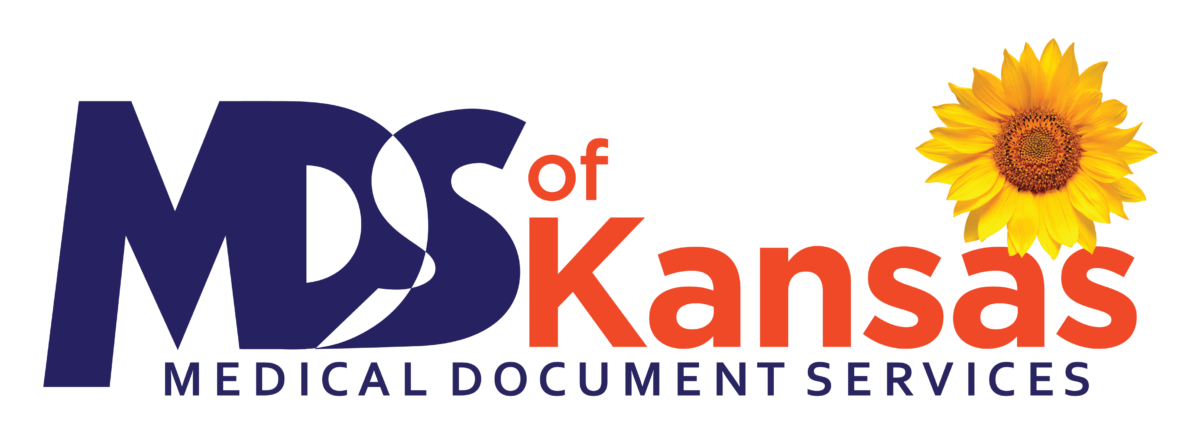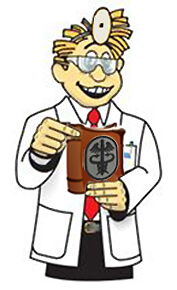” Medical scribes move beyond the emergency room” This is a great article written by Joseph Conn.
More docs get EHR help
Medical scribes move beyond the emergency room
By Joseph Conn
Posted: August 24, 2013 – 12:01 am ET
Hospitalist Marek Filipiuk is working the room like a master of the bedside manner. His smiling audience is a hospitalized 70-year-old female patient who’d been admitted through the emergency department the night before with respiratory problems.
An electronic health-record system is documenting the encounter, but the doctor never touches a computer.
Dr. Filipiuk is free to focus on questioning his patient and listening to her without distraction, because his hands and mind are free from typing into the EHR. Matt Restko, a medical scribe who is positioned across the room, laptop perched on a window ledge, is doing the computer entry work for him.
Filipiuk is a member of Best Practices Inpatient Care, a 65-provider hospitalist group in Long Grove, Ill. He is rounding this day at Advocate Good Shepherd Hospital near the Chicago suburb of Barrington, Ill., part of the nine-hospital Advocate Health Care system based in Downers Grove, Ill. Filipiuk’s group uses scribes at two Advocate hospitals. Restko, 27, is a University of Iowa graduate with a degree in biochemistry. He’s an employee of ScribeAmerica, Aventura, Fla., a provider of scribe services that has contracted with Filipiuk’s group.
Their collaboration exemplifies the migration of scribes from their initial beachhead in hospital emergency departments into hospital medical wards and office-based physician practices. The movement has been fueled in part by $15.5 billion in federal payments under the American Recovery and Reinvestment Act that have motivated more than 4,000 hospitals and 300,000 physicians to use EHRs.
Scott Hagood is vice president of marketing at Fort Worth, Texas-based PhysAssist Scribes, which provides and trains scribes for 109 sites, mostly emergency physician groups. He says his firm now is getting three or four times as many requests for scribes from clinic-based physicians as from emergency medicine groups. But the limited supply of qualified scribes and clinic physicians’ preference for working with the same scribe rather than a pool of them constrain growth. He says that to work effectively with scribes, clinic-based physicians have to develop a practice style similar to emergency physicians so they are comfortable working with several different scribes, who often are in school and aren’t available for regular, full-time hours.
Physicians say they like to use scribes to handle EHR data entry because doctors find EHRs slow and clunky to use, interfering with their interactions with patients. Those complaints have hardly lessened in the several years since EHRs have come into broad use. A June customer survey report by health IT market researcher KLAS Enterprises on EHR “usability” found that customer ratings of usability for nine leading EHR systems on six common EHR tasks ranged from 55% to 85%. For one thing, many doctors are slow typists.
“I hunt and peck,” says Dr. Michael Merry, an internist/pediatrician with FHN, a group practice based in Freeport, Ill., and chairman of its physicians’ EHR committee. After FHN adopted an EHR last summer, his productivity dropped to 20 to 24 patients a day with the EHR, from 25 to 30 with paper records. He started using a scribe in January and says he’s nearly returned to his pre-EHR productivity rate. Merry uses Physicians Angels, a Toledo, Ohio-based company that connects physicians with “virtual scribes”—remotely located either in India or other parts of the U.S.—using Voice over Internet Protocol.
“If used properly, I think it’s a very reasonable way to continue to be productive and not be impaired,” Merry says.
Data on scribe use are scant. The costs of scribes range from $10 to $20 an hour, according to a 2011 white paper by the American College of Emergency Physicians. The ACEP paper estimated, based on interviews with scribe service providers, that 1,000 hospitals and 400 physician groups are using them.
Dr. Michael Murphy, co-founder and CEO of ScribeAmerica, estimates the top four national companies employ about 4,700 scribes, with another 1,000 scribes working for startups and regional players. Most of them work in about 500 hospitals that use scribes, and most of those are in EDs. But Murphy predicts that growth in other hospital and outpatient areas will be huge. The company has 15 inpatient sites now that are not part of an emergency department, but “we’re anticipating it will be our largest line of services, and surpass the emergency departments in the next couple of years,” he says.
Some physician groups and hospitals say using scribes in EDs improves physician productivity enough to offset their costs. The ACEP study found a return on investment greater than 100%. The jury is still out, however, on whether scribes can boost physician productivity enough to offset their cost in clinical realms outside EDs.
The Vancouver (Wash.) Clinic says it found scribes to be well worth the price for outpatient work. The 230-provider, multispecialty group practice is moving forward with a plan to provide scribes to another six physicians this year, and 12 or so in 2014. The clinic ran a pair of successful pilots from October 2011 through January that eventually included 19 physicians, and 18 are now using scribes.
Tom Sanchez, the clinic’s chief operating officer, says the group pays its scribes, supplied by Scribes STAT, in Portland, Ore., “upwards of $20 an hour.” But he figures the group’s return on that investment is 15% to 20%.
Dr. Marcia Sparling, the clinic’s medical director for operations and IT, said the group had its physicians with scribes add one patient-contact hour to their workdays. Even so, scribe-assisted docs still managed to cut the total length of their workdays by 1.3 hours, on average, all due to a reduction in the participating doctors’ record-keeping chores. As a bonus, patients liked having the scribes around, according to the group’s survey of patients.
“There was some concern with providers that this would be disruptive to the doctor-patient relationship,” Sparling says. But “patients actually thought the scribe made the encounter better.” Nearly one-fourth said it was better, and three-quarters said it was the same. Asked whether the doctors listened better with a scribe, 32% said it was better.
Dr. Oliver Jenkins, an otolaryngologist with the multispecialty Toledo (Ohio) Clinic, says using a scribe has returned him to his level of productivity before his group starting using an EHR. Jenkins has worked with scribes for about 4½ years through Physicians Angels. On a typical “good day” at the clinic, he sees 25 to 30 patients while talking to a scribe in India. “All you need is a data connection and anyplace in the world becomes home,” he says.
EHR suppliers push back against the idea that scribes will always be needed to overcome the perceived clunkiness of their products, arguing that an evolution in the way EHRs are used will make scribes obsolete. “Some physicians say it’s clunky and others say it’s the best thing that we’ve ever used,” says Dr. Sam Butler, the physician leader at Verona, Wis.-based Epic Systems Corp. “I look at it as a toolbox. Traditional dictation, voice recognition, scribes, all of those should be used matched to physicians.”
Back at Advocate Good Shepherd, just before entering the patient’s room, Restko and Filipiuk huddle for five minutes at the nearby nurse’s station. They prepare for the encounter by reviewing her records from the ED visit the night before, and other records, diagnoses, medications, listed in the system. Then Filipiuk announces, “Let’s go see the patient.”
The patient readily consents to having Restko, introduced as a documentation specialist, accompany Filipiuk during the exam. Under the doctor’s conversational prodding, she explains she had been experiencing trouble breathing, and her family doctor thought it might be pneumonia. She’d taken a round of antibiotics, but when she started feeling dizzy, her husband took her to the emergency room.
He asks the patient how she feels. Aside from a cough she can’t shake, she says she feels fine and is eager to go home. He tells her the CT scan she’d had last night indicated the pneumonia was gone and there was no indication of any blood clot causing the cough.
Filipiuk occasionally glances over his shoulder to send a silent signal to Restko, who’s unobtrusively flying through the EHR template, keeping pace with the exam. Filipiuk checks his patient’s breathing with a stethoscope. “So,” he says, “there is bilateral wheezing. No crackling. Skin is cool.” Restko types. Filipiuk thinks a bit, then subtly signals to Restko to get ready for the assessment and plan.
“The coughing is the issue,” he says, looking directly at his patient. “It keeps you up at night. Here’s the plan. I don’t think you need any more antibiotics.” He tells her he wants to prescribe something “to relax your pipes.” But he promises to confirm everything with her after he checks with the pulmonologist who previously saw her.
Filipiuk, who has been working with Restko since March, says he initially had reservations about scribes. “My first impression was I felt I had someone else to worry about,” he said. But after three or four weeks, his relationship with the scribes became “more steady,” he said. “My productivity and efficiency is better than it used to be,” he says.
For Restko, who plans to attend medical school, working as a scribe “enhances my desire to become a doctor,” he says. “I can’t imagine a better way to get exposure” to what a physician actually does.
Filipiuk’s hospitalist group serves one Michigan hospital and six more in the Chicago area. Dr. Jeffry Kreamer, the group’s CEO, says it launched the scribe program last year after he saw how well scribes worked in the ED of one of the hospitals his group staffs.
“I want my doctors to be in the moment,” he explains. They “can see more patients. They’re fresher. It also makes them happier. They’re less exhausted at the end of the day and they’re more fulfilled.”
And their EHR record-keeping is better, too, he says. Nurses and fellow physicians appreciate the increased clarity of the notes, Kreamer says. “I’m always looking for a way to do what we do better,” he says. “This is better.”
http://www.modernhealthcare.com/article/20130824/MAGAZINE/308249958/more-docs-get-ehr-help


 #MDSofKansas will once again be at the #KMGMA2017 Spring Conference (04/20/17) and we are looking forward to seeing YOU! Please stop by our booth and check out some of the great giveaways, and learn what we’ve been up to! We are saving many clinics and businesses lots of money on everyday fees. If you would like to save money, too, stop by and ask us how!
#MDSofKansas will once again be at the #KMGMA2017 Spring Conference (04/20/17) and we are looking forward to seeing YOU! Please stop by our booth and check out some of the great giveaways, and learn what we’ve been up to! We are saving many clinics and businesses lots of money on everyday fees. If you would like to save money, too, stop by and ask us how!



 Sydney Blanton’s experience at
Sydney Blanton’s experience at
10 Reasons to Consider Becoming a Medical Scribe Ahead of Med School